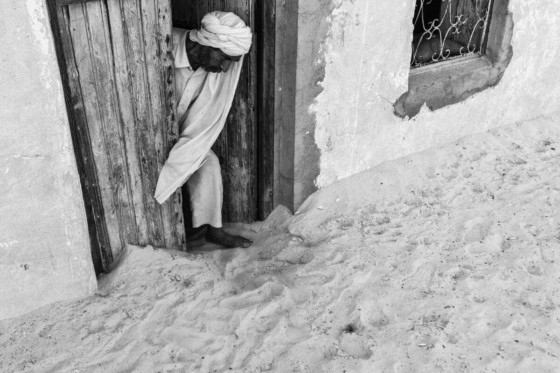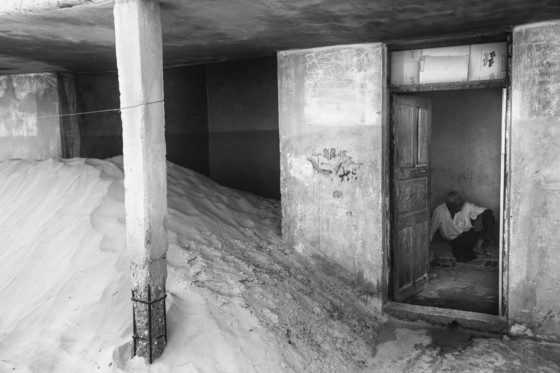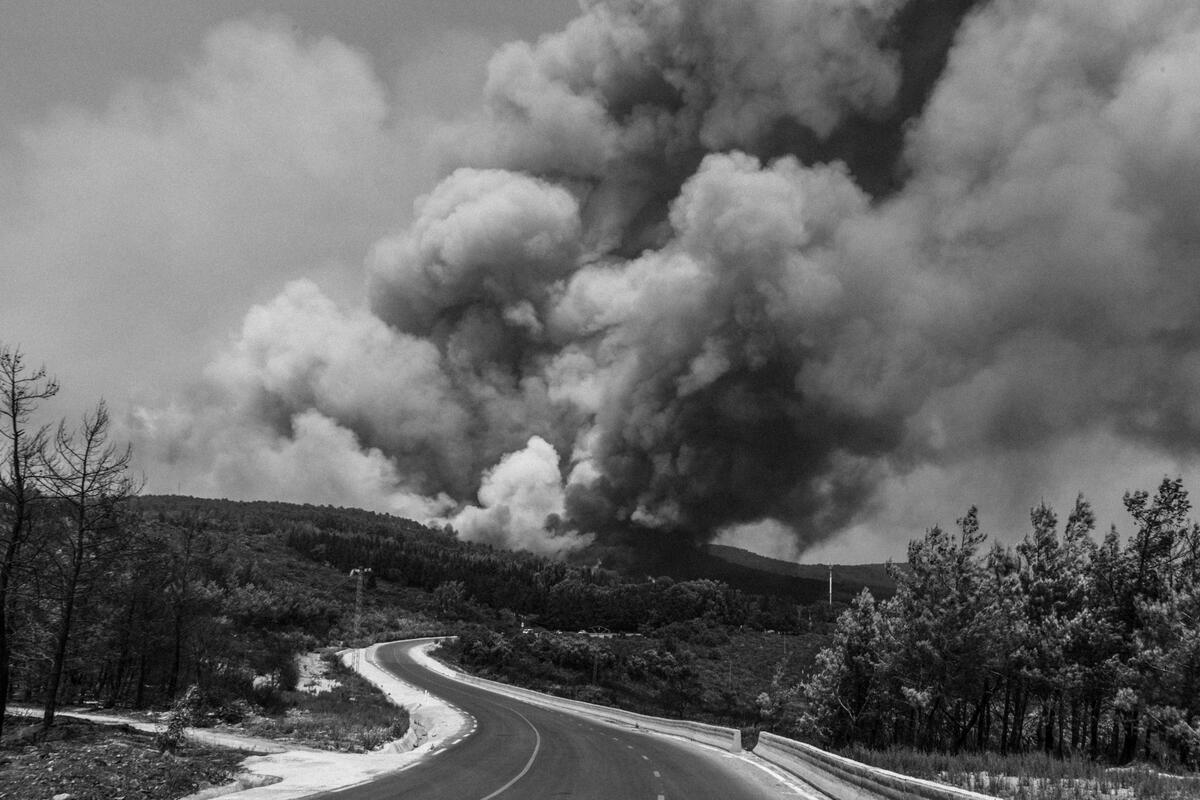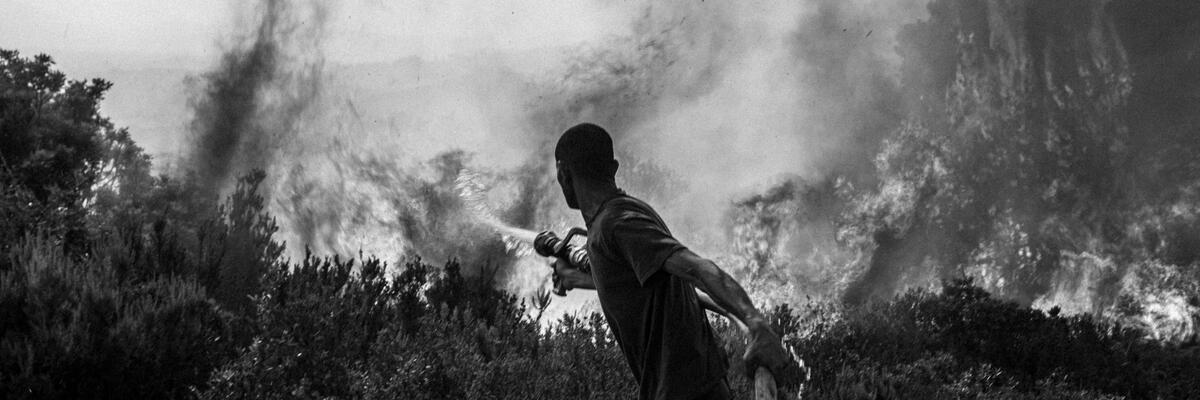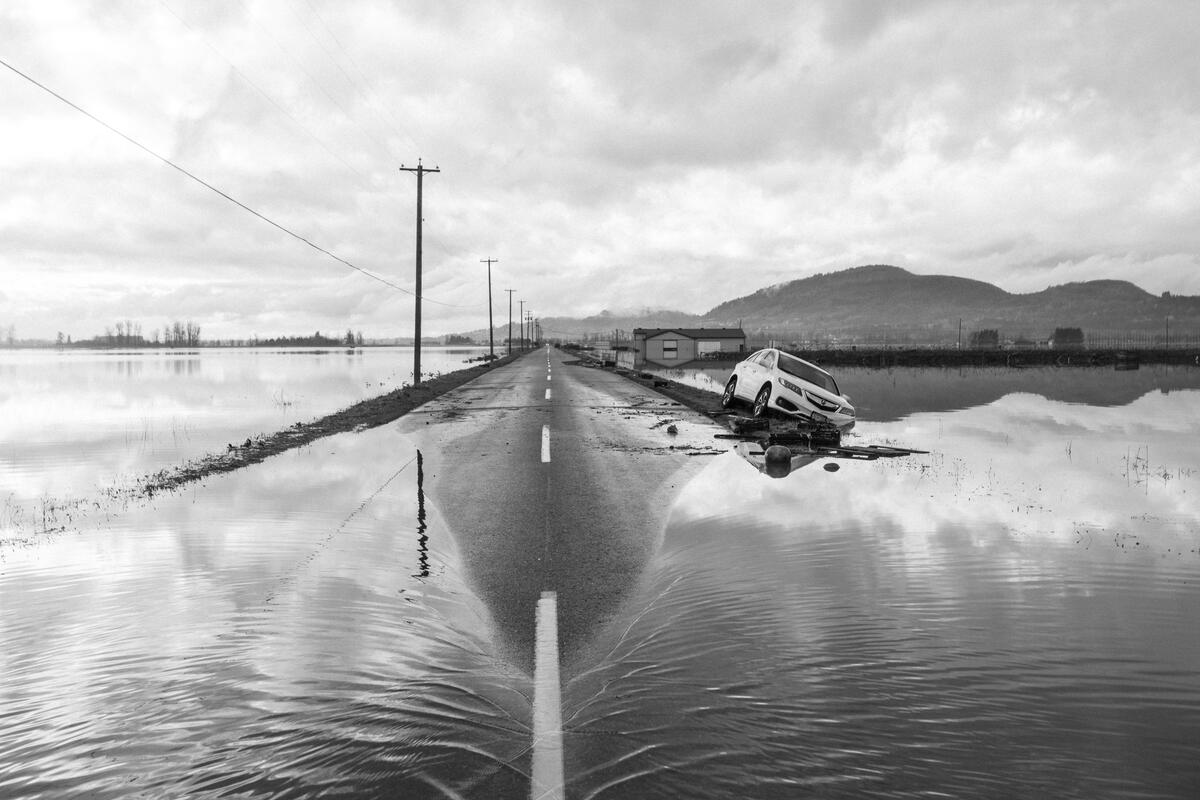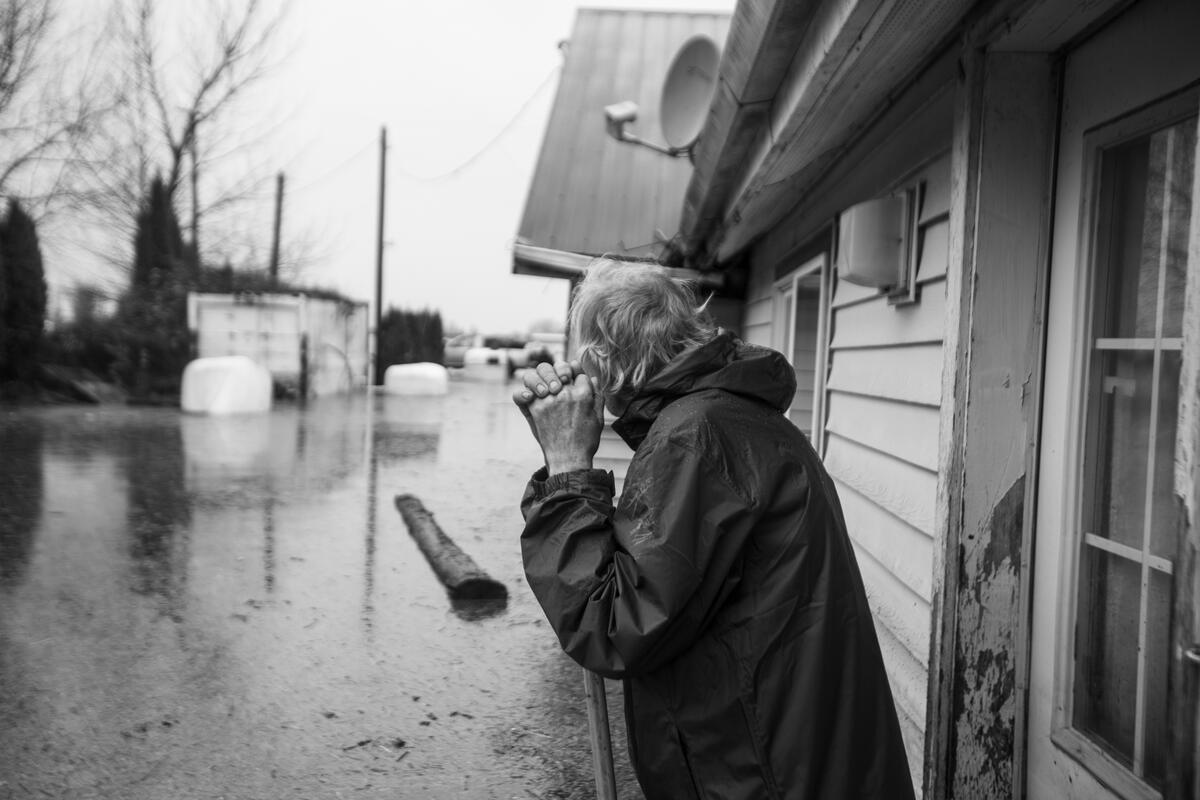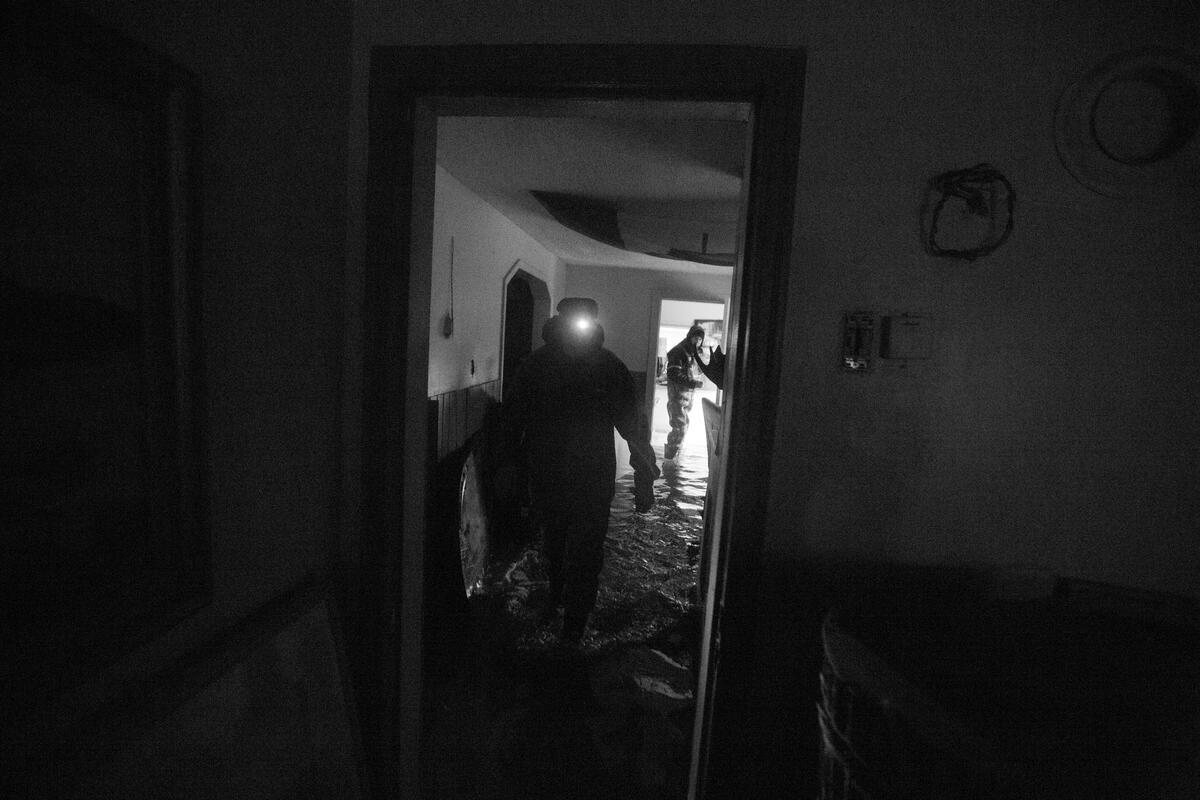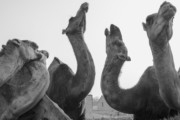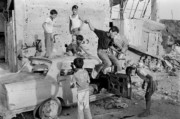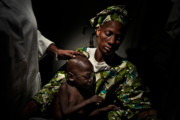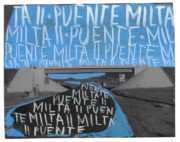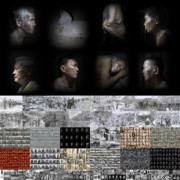Desert, Fire, Flood by Zied Ben Romdhane
In an immersive exhibition by Emergence Magazine in London, Zied Ben Romdhane presents a selection of images drawing on three natural disasters
Shifting Landscapes, an immersive 10-day exhibition by Emergence Magazine opens at the Bargehouse on London’s South Bank this weekend. Bringing together the work of nine artists from across the globe, the exhibition seeks to bear witness to the Earth’s rapid transformations and shed light on the imprint that we, as human beings, have left on the biosphere. “We have arrived at a threshold,” the magazine writes. “A liminal space where the world we have known is coming undone and new configurations are still taking shape.”
Zied Ben Romdhane, who has been documenting natural disasters for several years now, is one of the nine participating photographers. His selection, titled Desert, Fire, Flood, features over 25 images from three bodies of work — each documenting the effects, and aftermath, of the elements in rage, pushed to extremes due to the planet’s changing climate.
The first part, Desert, is composed of images that Ben Romdhane shot in his native Tunisia from 2018 to 2019. His focus was on ‘sand encroachment,’ a natural phenomenon in which grains of sand, when carried by wind, begin to accumulate on coasts and cultivated or uncultivated land. When the formed dunes begin to move, they are capable of burying roads, crops, dams, and entire towns, which in turn leads to severe damage and extremely difficult living conditions. Exploring this phenomenon, Ben Romdhane traveled to the south, visiting several villages on the southern shores of the Chott el Djerid, the largest salt lake of the Sahara desert.
For towns and villages in this region, sand encroachment is a constant threat. Despite the Tunisian government’s efforts to make these spaces habitable for communities and incentivize nomads to move to these areas — fighting against the movements of the sand is a constant struggle.
Visual representations of climate change often focus on water, with melting ice-caps and rising sea levels, or fire, with the growing destruction caused by wildfires each year. And yet, wind and its impact on desert communities such as in southern Tunisia is another force to be reckoned with, with entire villages at risk of being wiped out.
In Ben Romdhane’s images, the dunes of sand seem to encroach on signs of civilizations — a huge dune looms over a village in one image stretching to the line of horizon. In another, a man steps out onto a pile of sand that has risen above the threshold of his front door while leaving his home.
In 2021, two years after his documentation of the destructive dunes in the desert, Ben Romdhane captured the intensity and aftermath of wildfires in northern Tunisia. That year, in several regions surrounding towns in the north like Fernana, Aïn Draham, Kasserine and Bizerte, wildfires destroyed more than 3,100 hectares of forest — twice as much as the previous year.
In his series, largely shot around Fernana in the Jendouba Governorate, Ben Romdhane captures evacuations of people and cattle as the wildfires spread. This time, it is not sand that draws closer to the homes, but fire, transforming an ominous, omnipresent threat into a moment of pure terror. In one image, a lone firefighter stands resolute, hose in hand, facing a wall of flames. And in a series of panoramas, the photographer captures the striking before-and-after: juxtaposing the action with the aftermath to show the full extent of the devastation.
In the same year, Ben Romdhane then shifted his gaze to Canada, wildfires and floods hit British Columbia in quick succession. The photographer traveled to the province several times between June and November to document first the aftermath of devastating fires in Lytton, a small town that was destroyed within 15 minutes when a wildfire swept in.
In November, he then traveled to the town of Abbotsford, only a two-hour drive from Lytton, as over 600mm of rain fell in two days, leaving thousands of people stranded.
He stayed in the town for a week, working with two farmers who had moved from Ontario to escape the freezing temperatures. “Me and my brother Morty left Ontario because of the snow and the cold to come here,” one of the brothers, Ress, told him. “Now it’s the floods destroying all of our land and property, where can we go now?”
Ten days after being evacuated, one of the brothers is pictured transporting several household items by boat through the town’s streets, which were still largely submerged by water.
Ben Romdhane began documenting around the theme of climate change in 2014 through his long-term project and first photobook, West of Life, published by Red Hook Editions in 2018, in which he explores life in mining villages in Tunisia. “I began to explore the connection between Tunisian people and their environment, specifically how geography and the environment shape Tunisian identity,” he explains. “This includes both Tunisians from the bustling coastal cities and others from villages inside the country. These environmental differences took centuries to sculpt these ‘two identities.'”
"In recent years, there has been an acceleration of environmental change, with numerous natural disasters tangibly affecting the two countries where I reside, Tunisia and Canada."
- Zied Ben Romdhane
In 2021, while documenting the devastating affects of the floods in British Columbia, he said: “In the same year, I have seen drought, famine in Niger, and fire in Tunisia, and this in Canada. As a journalist and photographer, I will continue to record it. We have to focus on this issue, focus on the most important questions, we can’t take a step back.”
“I’m attempting to document how people respond to these environmental changes,” he adds. And yet, in Desert, Fire, Flood, the frequent apparition of people or signs of civilization in his photographs — often present but rarely protagonists — are a humble reminder of how while we are, as Emergence Magazine describes, “entangled with the biosphere,” we remain mere players in the face of the destructive force of nature.
Desert, Fire, Flood was one of three series on view as part of Shifting Landscapes, an immersive exhibition from Emergence Magazine at the Bargehouse in Central London. More info here.
In August, Ben Romdhane, alongside Newsha Tavakolian, will be leading a three-week intensive Summer Course designed for aspiring or practising photographers in the French coastal town of Marseille. Find out more and book your spot here.




